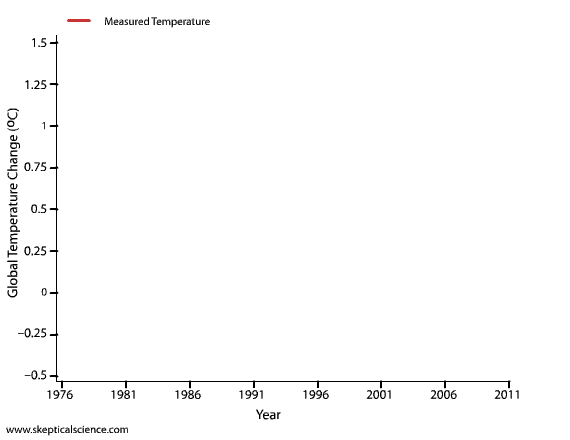Tiny Tim Was Right! The Ice Caps Are Melting!
- Thread starter Spade
- Start date
You are using an out of date browser. It may not display this or other websites correctly.
You should upgrade or use an alternative browser.
You should upgrade or use an alternative browser.
Perhaps it is a case of it being one man's collapse is another man's growing in that the height of the ice onland could all rush into the ocean as one high speed event and that would make those waters slushy all the way to the south of Africa and South America and the lower elevation on the land allows a drop of the winds coming off the cold center to be closer to the ground and blow farther north making for a big climate change in a short period. Big enough that the north would also get colder and experience heavy snowfalls although a mile of freezing rain does have it's appeal as being a news worthy event for Yellowknife. Been awhile since I timed crops but knowing how long between frosts means the difference a harvest above normal of a minimal one. Wheat might have to be planted further south than the prairies and we produce crops that can be harvested after a hard frost without any loss in quality, like potatoes for vodka and gas line antifreeze, ..... and more vodka.Huge Antarctic ice sheet collapsing - Technology & Science - CBC News
Who cares if you are on the Prairies?
Clearly you have no desire to accept the facts in this matter and the best you can do is post an unrelated gif.
Even cap'n has better foresight to at least contribute something relevant.
Oh well.
Even cap'n has better foresight to at least contribute something relevant.
Oh well.
Clearly you have no desire to accept the facts in this matter and the best you can do is post an unrelated gif.
Even cap'n has better foresight to at least contribute something relevant.
Oh well.

Especially the ones from NASA.F'n scientists and their tide gauges.
Just as I thought.
You've completely given up.
West Antarctic glacial collapse: What you need to know
Q: Why is the collapse of an ice sheet so important?
A: The science of global warming comes down to ice. Though Earth’s warming, the planet is currently in an ice age, and great sheets of ice at the poles — think Greenland and Antarctica — have not always existed. In the past, sea levels were actually significantly higher than they are in this era’s environment, which allowed contemporary civilization to thrive.
If all of the ice was to melt at the poles, the National Academy of Sciences predicts the sea level rise approximately 60 meters — about 200 feet. That would result in “storm surges more likely to cause severe impacts” and “coastal inundation.”
Q: How did researchers come to this conclusion?
A: Both teams of scientists came to a strikingly similar conclusions about West Antarctic’s glacial collapse — but through very different means. The NASA study used satellite radar to scrutinize several glaciers hugging the Amundsen Sea that contain enough water to raise sea levels by four feet. They found a “continuous and rapid retreat,” and that there is “no [major] obstacle that would prevent the glaciers from further retreat.”
The University of Washington researchers used computer simulations to come to the same conclusion, but with an added caveat: One of the glaciers, Thwaites, acts as a “linchpin” on the rest of the ice sheet — which contains an additional 13 feet of global sea rise. “In our model simulations it looks like all the feedbacks tend to point toward it actually accelerating over time,” explained lead author Ian Joughlin. “There’s no real stabilizing mechanism we can see.”
Q: What’s the endgame?
A: A very different planet. Some scientists say the collapse of West Antarctica is only the beginning. Regardless of Monday’s findings we may have already triggered nearly 70 feet of additional sea rise.
Washington Post: Breaking News, World, US, DC News & Analysis

Your graph is wrong.
climate model graphs fail - Bing Images
Are you saying my Spiderman gif has just as much relevance as his graph?
Just as I thought.
You've completely given up.
He wasn't in it to start with. Pretty much the equivalent of plugging your ears and yelling "LA LA LA LA LA I CAN"T HEAR YOUUUUU!!!" :lol:
He wasn't in it to start with. Pretty much the equivalent of plugging your ears and yelling "LA LA LA LA LA I CAN"T HEAR YOUUUUU!!!" :lol:

Are you saying my Spiderman gif has just as much relevance as his graph?
Spiderman is always relevant! He's freaking Spiderman, he does whatever a spider can.
I don't think that's going to matter as much now that we know that the west antarctic ice sheet are undergoing breakup. The denial crowd has gotten a lot of mileage out of the "antarctic gaining ice" thing for some time, but this mutes that argument.
That's so cute!I don't think that's going to matter as much now that we know that the west antarctic ice sheet are undergoing breakup. The denial crowd has gotten a lot of mileage out of the "antarctic gaining ice" thing for some time, but this mutes that argument.

